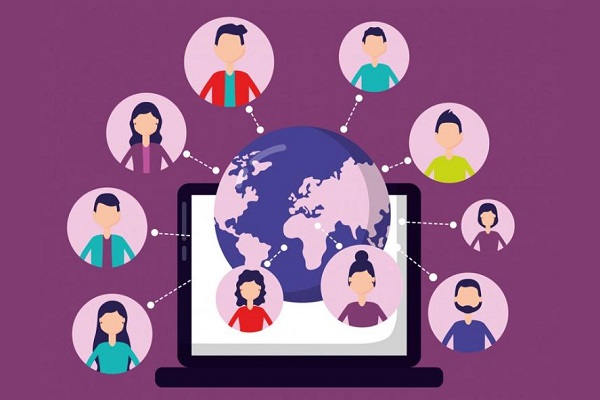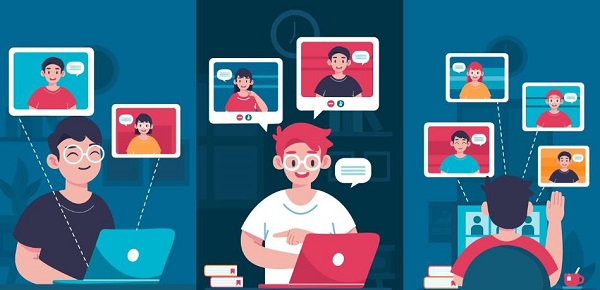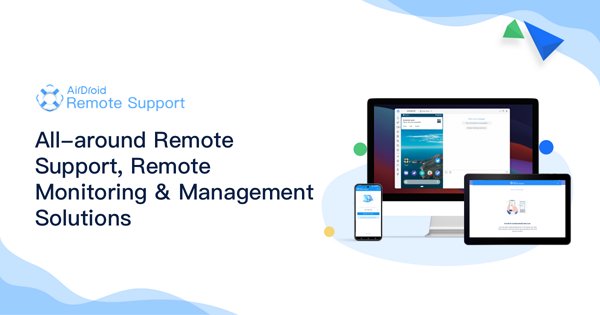Most Effective Tips and Tools for Managing Distributed Teams
Distributed teams are becoming more familiar in the modern workplace as technology enables people to work from anywhere. Unlike remote teams, where all members work from different locations, distributed teams have some members who work from a central office and some who work remotely.
In this article, we will discuss some helpful tips, tools, and best practices for managing distributed teams effectively. By following these suggestions, you can foster a collaborative, cohesive, and high-performing team that can achieve your business goals.
What Are Distributed Teams? Benefits and Challenges
A distributed team is a type of team where some members work from a central office and some work from different locations, such as their homes, co-working spaces, or other countries.
Distributed teams are different from remote teams, where all members work remotely. Distributed teams are also different from hybrid teams, where some members work from the office on some days and remotely on other days.

😊Some of the benefits of distributed teams are:
🔹Access to a larger and more diverse talent pool: You can hire the best people for your team regardless of their location and benefit from their skills, perspectives, and experiences.
🔹Increased productivity and performance: You can leverage the different time zones, work styles, and preferences of your team members and allow them to work when and where they are most productive and comfortable.
🔹Reduced costs and environmental impact: By minimizing commuting and transportation, you can save on office space, equipment, travel, and relocation expenses and reduce your carbon footprint.
🙁Some of the challenges of distributed teams are:
🔹Communication barriers: You may face difficulties in communicating effectively with your team members, especially if they speak different languages, use different tools, or have different expectations and norms.
🔹Cultural differences: You may encounter conflicts or misunderstandings due to the different values, beliefs, and behaviors of your team members, especially if they come from different countries or backgrounds.
🔹Coordination issues: You may need help to align your team members on the same goals, priorities, and deadlines and to monitor their progress and performance, primarily if they work on different projects, tasks, or schedules.
7 Most Practical Tips for Managing Distributed Teams
Managing distributed teams can be challenging but not impossible. Here are some of the most practical tips for managing distributed teams effectively:
Establish Clear and Harmonized Goals
You need to set clear and specific goals for your team and make sure they are aligned with your organizational vision and strategy. You also need to communicate these goals to your team members and confirm they understand their roles, responsibilities, and expectations.
You can use tools like OKRs (Objectives and Key Results) or SMART (Specific, Measurable, Achievable, Relevant, and Time-bound) goals to help you define and track your team goals.

Develop Transparent Communication Guidelines
You need to establish clear and consistent communication guidelines for your team and make sure they are followed by everyone. You need to decide on the best communication tools, channels, and frequency for your team and use them effectively.
You also need to encourage open and honest communication among your team members and provide regular feedback and recognition. You can use tools like Slack, Zoom, or Microsoft Teams to facilitate your team communication.
Conduct Regular Face-to-Face Meetings
You need to schedule regular face-to-face meetings with your team, either in person or online, to build trust, rapport, and collaboration. You need to use these meetings to share updates, discuss issues, solve problems, and celebrate successes.
You also need to make these meetings engaging, interactive, and fun and avoid making them too long or boring. You can use tools like Miro, Mural, or Jamboard to make your meetings more creative and productive.
Organize Virtual Team Activities
You need to organize virtual team activities, such as games, quizzes, or contests, to foster team spirit, camaraderie, and culture. You need to use these activities to break the ice, reduce stress, and have fun with your team.
You also need to make these activities inclusive, diverse, and accessible and avoid making them too competitive or mandatory. You can use tools like Kahoot, Jackbox, or Houseparty to host your virtual team activities.

Enable Asynchronous Communication
You need to enable asynchronous communication, which means communicating without expecting an immediate response and respecting the different time zones, work schedules, and preferences of your team members.
You need to use asynchronous communication to share information, updates, and feedback that are not urgent or time-sensitive and to avoid interrupting or distracting your team members.
You also need to use asynchronous communication to empower your team members to work independently and autonomously and to avoid micromanaging them. You can use tools like Loom, Notion, or Google Docs to support your asynchronous communication.
Improve Remote Onboarding Strategies
You need to improve your remote onboarding strategies, which means welcoming and integrating new team members who join your team remotely to ensure they have a smooth and positive start. You need to provide them with the necessary resources, tools, and training to help them learn about your organization, team, and work.
You also need to assign them a buddy, mentor, or coach to help them get to know their colleagues, roles, and expectations. You can use tools like Trello, Asana, or Airtable to manage your remote onboarding process.

Ensure Work-Life Balance
You need to ensure work-life balance, which means maintaining a healthy and harmonious balance between your work and personal life to prevent burnout, stress, and fatigue. You need to set and respect your own boundaries, such as working hours, breaks, and days off, and encourage your team members to do the same.
You also need to support your team members' well-being, such as physical, mental, and emotional health, and offer them flexible and supportive work arrangements. You can use tools like Calendly, Headspace, or Fitbit to help you achieve work-life balance.
3 Most Essential Tools for Distributed Teams
In addition to the tools mentioned above, there are some other tools that are essential for distributed teams. Here are some of the most essential tools for distributed teams:
Unified Communication Platform
You need a unified communication platform, which is a tool that combines different communication modes, such as voice, video, chat, and email, into one integrated system to simplify and streamline your team communication.
A unified communication platform can help you communicate with your team members more effectively, efficiently, and conveniently, regardless of their location, device, or preference.
It can also help you improve your team collaboration, productivity, and performance. Some examples of unified communication platforms are RingCentral, Slack, or Microsoft Teams.
Remote Support Software
You need remote support software, which means a tool that allows you to remotely access, control, and troubleshoot another device, such as a computer, tablet, or smartphone, to provide technical support or assistance to your team members or customers.
One example of remote support software is AirDroid Remote Support, which allows you to remotely access and control Android and iOS devices and provides voice and text chat, AR camera, and tutorial Gesture features.

Remote support software can help you solve technical issues, install software, update systems, or transfer files without having to be physically present or travel to another location.
Project Management Platform
You need a project management platform, which means a tool that helps you plan, organize, execute, and monitor your team projects, tasks, and workflows to ensure they are completed on time, on budget, and quality.
A project management platform can help you define your project scope, goals, and deliverables, assign roles and responsibilities, track progress and performance, and manage changes and risks.
It can also help you improve your team's visibility, accountability, and collaboration. Some examples of project management platforms are Monday, Wrike, and Basecamp.
Conclusion
In conclusion, running teams spread out across different places needs clear goals, open communication, and a balance between work and life. Having regular meetings, fun team activities online, and letting people talk without needing an immediate answer can help everyone work together better.
Using tools like AirDroid for remote support, along with platforms that help with communication and project management, can make everything smoother.
By following these tips and using the right tools, teams can work well together even if they're far apart, making sure everyone stays productive and connected no matter where they are.






Leave a Reply.